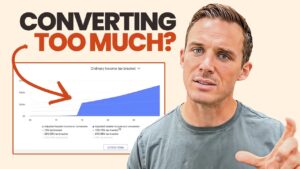Maximizing Retirement Savings: A Comprehensive Guide to Roth Conversions

Planning for retirement involves more than just accumulating wealth; it’s about strategically managing your savings to minimize taxes and maximize income. One effective strategy is the Roth conversion, which can lead to substantial tax savings over time. Let’s delve into what Roth conversions entail, examine a real-life case study, and outline key factors to consider when determining if this approach aligns with your financial objectives.
Understanding Roth Conversions
A Roth conversion involves transferring funds from a traditional, tax-deferred retirement account, such as a Traditional IRA or 401(k), into a Roth IRA. While this process requires paying taxes on the converted amount in the year of conversion, it offers significant long-term benefits:
- Tax-Free Growth: Investments within a Roth IRA grow tax-free, allowing your savings to compound without the drag of future taxes.
- Tax-Free Withdrawals: Qualified withdrawals from a Roth IRA during retirement are tax-free, providing a predictable income stream.
- No Required Minimum Distributions (RMDs): Unlike traditional IRAs, Roth IRAs do not mandate RMDs during the account owner’s lifetime, offering greater flexibility in retirement planning.
Case Study: David and Lisa
Consider David (58) and Lisa (57), a couple with a substantial portion of their net worth in pre-tax retirement accounts. They plan to retire at 62 and aim to spend $10,000 monthly, adjusted for inflation. Their current incomes are $195,000 and $50,000, respectively.
Tax Planning Window:
The period between retirement and the onset of RMDs presents a prime opportunity for Roth conversions. During these lower-income years, David and Lisa can convert portions of their pre-tax accounts to Roth IRAs, potentially at lower tax rates, thereby reducing future tax liabilities.
Conversion Strategy and Tax Implications:
By analyzing their projected income and expenses, they can determine optimal conversion amounts to maximize tax efficiency. For instance, converting up to the top of their current tax bracket without crossing into a higher one can minimize immediate tax impact while lowering future RMDs.
Projected Outcomes:
Implementing a strategic Roth conversion plan could significantly reduce their RMDs and total federal taxes over their retirement horizon, enhancing their financial security and estate planning outcomes.
Key Factors to Consider for Roth Conversions
- Current and Future Tax Rates:
- Assess your current tax bracket and compare it to expected rates during retirement. Conversions are more advantageous when you anticipate being in a higher tax bracket in the future.
- Timing and Duration of Conversions:
- Plan conversions during years with lower taxable income, such as early retirement, to capitalize on lower tax rates.
- Impact on Social Security and Medicare:
- Be mindful that increased taxable income from conversions can affect Social Security taxation and Medicare premiums.
- Estate Planning Considerations:
- Roth IRAs can be advantageous for heirs, as withdrawals are generally tax-free, and beneficiaries are not subject to RMDs for the first 10 years.
- Legislative Environment:
- Stay informed about potential tax law changes that could impact the benefits of Roth conversions. For example, the expiration of certain tax provisions in 2025 may influence your strategy. Investors
Conclusion
Roth conversions can be a powerful tool in optimizing your retirement savings, offering tax-free growth and withdrawals, and reducing future tax liabilities. However, they require careful planning and consideration of various factors, including current and future tax rates, income needs, and legislative changes. Consulting with a financial advisor can provide personalized guidance tailored to your unique financial situation, ensuring that your retirement strategy aligns with your long-term goals.
You should always consult a financial, tax, or legal professional familiar about your unique circumstances before making any financial decisions. This material is intended for educational purposes only. Nothing in this material constitutes a solicitation for the sale or purchase of any securities. Any mentioned rates of return are historical or hypothetical in nature and are not a guarantee of future returns.
Past performance does not guarantee future performance. Future returns may be lower or higher. Investments involve risk. Investment values will fluctuate with market conditions, and security positions, when sold, may be worth less or more than their original cost.
For more insights and personalized financial planning strategies, visit Root Financial.
Related Articles:







